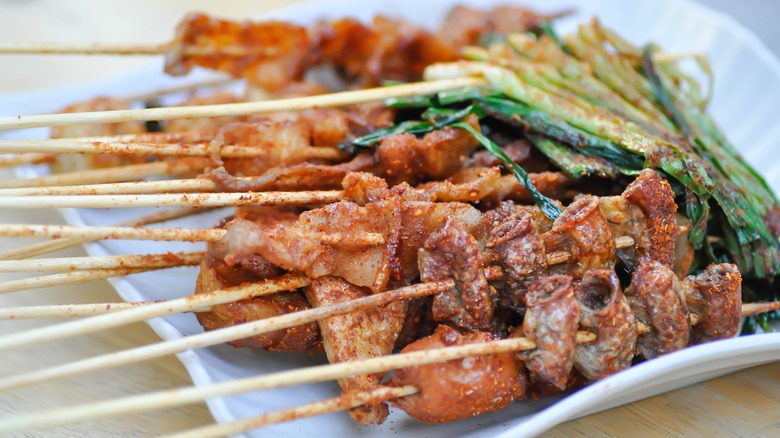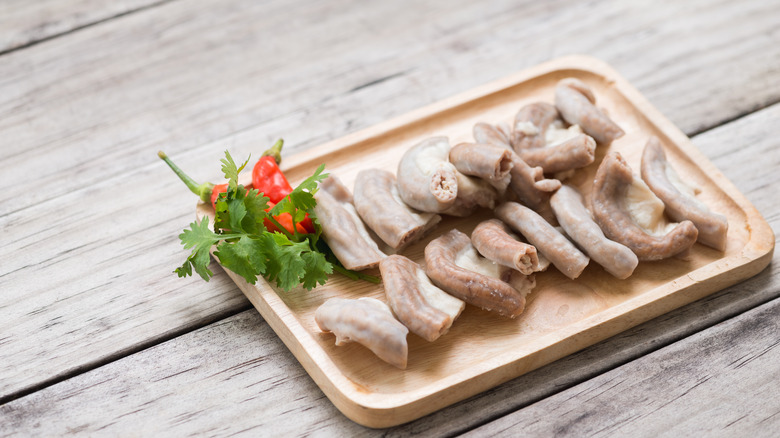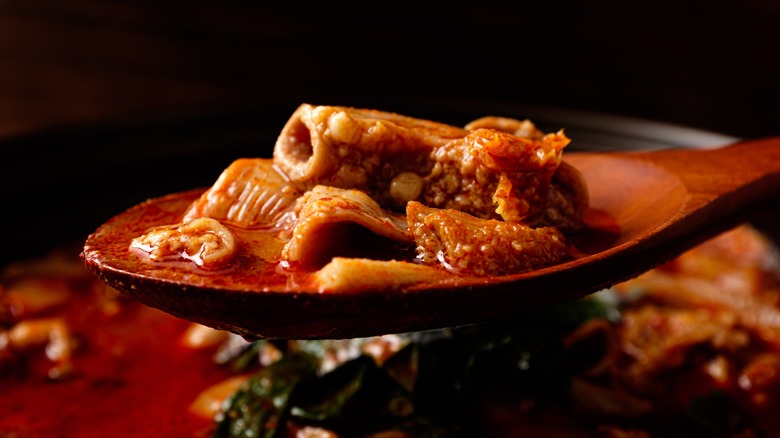How To Prep And Clean Chitterlings With Boiling Water
Emerging from the heart of the southern United States is a traditional soul food delicacy: chitterlings. Also known as chitlins, chitterlings are pieces of pig small intestines that are boiled, fried, and potentially stuffed. Rooted in one of the country's darker periods — prior to the Civil War, when enslavers kept the more favorable parts of pigs for themselves and left the less desirable parts, including the feet, ears, and intestines, for enslaved people — chitterlings have a significant history.
The enslaved people transformed these otherwise inedible pig intestines into delicious meals to share with their loved ones, often served alongside dishes made from pigs' feet and stomachs, many of which have been passed down through generations. Today, chitterlings are less common, partly due to the great effort required to prepare them, but some families continue the tradition for holidays and special events.
As you might imagine, proper cleaning is crucial. The Centers for Disease Control and Prevention warns that chitterlings "can be contaminated with Yersinia enterocolitica and other harmful germs that can make you sick." Therefore, it's essential to sanitize chitterlings by soaking them in water with baking soda or vinegar for several minutes, followed by thorough rinsing to remove debris or any residue.
Additional steps in cleaning chitterlings
Before delving into the specifics of cleaning chitterlings, it's crucial to discuss safety measures. If you're going to cook with pig intestines, make sure to wash your hands thoroughly with soap and hot water first. You should also sanitize any utensils or surfaces that come into contact with the chitterlings during the cleaning and cooking process.
To clean your chitterlings, start by peeling away the outer membrane one piece at a time. This minimizes unfavorable smells and tastes and eliminates a majority of external debris. After removing every visible bit of debris, you have the option to rinse your chitterlings in highly diluted bleach, or you can proceed directly to boiling.
During the boiling process, which can last up to 20 minutes, you should skim away any impurities from the water, replacing it with clean water as necessary. Repeat this process as needed to ensure that all traces of debris are removed and all impurities have been released from the chitterlings. Allow the chitterlings to drain in a colander, and then you're ready to move on to the cooking phase.
Methods of cooking up a batch of chitterlings
Similar to their sister dish, pork bung, chitterlings can be cooked in several different ways, with boiling and frying being the two most common methods. Note that this phase of boiling is a separate step from the initial boiling used to clean the chitterlings. In this stage, you might boil the chitterlings in a mixture of broth, vinegar, seasonings, herbs, and various vegetables, cooking them until tender.
Alternatively, after boiling them clean, you can fry your chitterlings. As with any frying process, you can dip the chitterlings in egg and then coat them with a breading of your choice, such as bread crumbs, crackers, or beer batter. Fry the chitterlings until they're golden brown, and then let them rest on paper towels to drain away any excess oil.
Regardless of your chosen cooking method, you can serve chitterlings as a side dish or alongside your favorite southern classics — cornbread, collard greens with ham and bacon, or even fried chicken. Now, that's a meal worth the time and effort!



